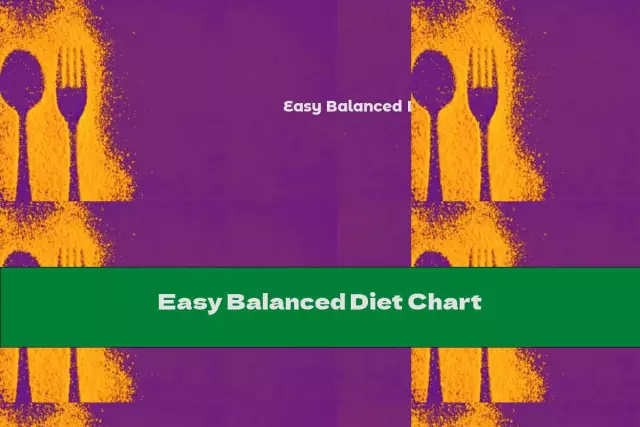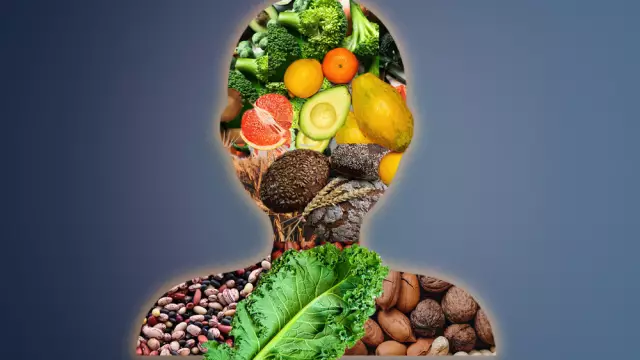- Author Rachel Wainwright [email protected].
- Public 2023-12-15 07:39.
- Last modified 2025-11-02 20:14.
Therapeutic nutrition rules: medical diets

It is mistakenly believed that a diet is necessary either for those who wish to lose weight, or for seriously ill people or people after surgery. In fact, nutritional therapy is necessary for all diseases without exception, be it headache or indigestion. A lot depends on how a person eats, his recovery depends on how a sick person eats, and often what his health will be in the future.
Medical diets
There are diseases in which diet is an important part of the treatment, an important part of it, and a violation of the diet can make all other therapy useless. We can say that in this case, compliance with the rules of medical nutrition is vital. Such diseases, in particular, include diabetes mellitus, gastric and intestinal ulcers, diseases of the immune system, in particular, allergies, celiac disease, and, of course, obesity.
For these and other diseases, in the treatment of which nutrition plays an important function, medical diets have been developed, which take into account all the necessary parameters: not only the list of products, but also the type of heat treatment, the degree of grinding, the ratio of micro- and macroelements in the portion, the portion size, its calorie content, frequency rate and meal time.
For convenience, medical diets are numbered, for example, dietary table No. 1, dietary table No. 7. Some of them have several options, and then they are distinguished by options, adding a letter to the name: dietary table No. 5P, for example, means diet No. 5, recommended in the treatment of chronic liver and gallbladder diseases, and the letter P in the name means that it adapted for patients with pancreatitis, i.e. inflammation of the pancreas.
A short list of medical diets is as follows:
- Diet table number 1 - is prescribed for gastric ulcer and duodenal ulcer in the acute stage;
- Diet table number 2 - for chronic and acute gastritis, chronic and acute enterocolitis;
- Diet table number 3 - for constipation;
- Diet table No. 4 - for bowel diseases with diarrhea;
- Diet table number 5 - for diseases of the biliary tract and liver;
- Diet table number 6 - with urolithiasis;
- Diet table number 7 - for acute and chronic inflammatory diseases of the kidneys;
- Diet table number 8 - for obesity;
- Diet table number 9 - with diabetes mellitus;
- Diet table number 10 - for cardiovascular diseases, accompanied by heart failure;
- Diet table number 11 - for tuberculosis;
- Diet table number 12 - for diseases of the nervous system caused by functional disorders;
- Diet table number 13 - for infectious diseases in the acute period, accompanied by fever;
- Diet table number 14 - with kidney stones caused by an increased content of oxalates in the urine;
- Diet table number 15 - a general therapeutic diet used for diseases that do not require specific nutrition.
Restrictions and rules common to all diets
All of these diets have a lot in common: gentle heat treatment of foods, which allows you to preserve the maximum of nutrients in cooked dishes, at least five meals a day at the same time - the optimal mode to ensure the normal function of all organs of the digestive system, as well as complete and unconditional exclusion of those products that are known to be harmful to health.
So, all diets exclude alcoholic beverages, smoked meats and fatty foods, sugary carbonated drinks, fast food and so-called snacks: chips, croutons impregnated with flavors and similar "delicacies".
Medical diet on the example of dietary table No. 13
Let's take a closer look at the recommendations regarding nutrition during the period of acute infectious diseases, accompanied by a rise in temperature and other familiar symptoms, for example, during a sore throat.
Diet principle number 13: to correct the increased load on the vital organs, to provide the body with easily digestible food containing the necessary nutrients.
General characteristics of the table number 13: diet with restriction of fats and carbohydrates, protein content within the lower limit of the norm. Chemical and mechanical irritants are excluded - food is given in crushed or pureed form. Drink plenty of fluids, because there is a need to flush toxic substances from the body. Multiplicity of food intake - at least 6 times a day, in small portions. For the prevention of constipation, it is necessary to increase the proportion of vegetables, which must be thermally processed in a gentle way (stewing, stewing, boiling in a small amount of water).
Recommended Products List:

- Green and black tea with lemon, natural fruit and berry or vegetable juices, not too concentrated, fruit drinks, compotes;
- Fermented milk products: fresh low-fat cottage cheese, not too fatty sour cream, kefir, fermented baked milk, yogurt;
- Milk;
- Bread or croutons dried in a toaster, dry biscuits, for example, "Zoological";
- Vegetables: all seasonal vegetables, with the exception of legumes and those that can irritate mucous membranes (radishes, radishes, cabbage, hot peppers);
- Vegetable or thin broth soups, preferably pureed or slimy soups:
- Porridge: buckwheat, rice, oatmeal, semolina;
- Low-fat varieties of fish and meat (veal, beef, chicken, rabbit);
- Boiled eggs or in the form of a steamed omelet;
- Seasonal fruits in the form of compotes, jellies, mousses. Baked apples;
- Sweets: honey, jam, jams, marmalade, marshmallow, marshmallow.
List of prohibited products:
- Spicy, smoked and salty snacks;
- Fresh pastries, including fresh bread;
- Fatty and difficult to digest meats and poultry (pork, lamb, fatty beef, duck, fatty parts of chicken);
- Canned meat and fish;
- Fatty dairy and fermented milk products;
- Porridge: corn, barley, pearl barley, pea;
- Omelette;
- Vegetables and fruits with a coarse, fibrous structure, especially raw, as well as those that irritate the mucous membrane, mushrooms;
- Sweets: cakes, pastries, fatty cookies, chocolate.
How long do you need to stick to nutritional therapy?
Recommendations about how long to adhere to nutritional therapy are usually given by the attending physician. The general rule is that nutritional therapy is necessary while the person is sick, and the need for it disappears when the patient recovers. However, there are diets that should be followed for life. For example, this applies to a diet with diabetes mellitus or uric acid diathesis, since even after the symptoms subside, the body's predisposition to these diseases remains forever.
One more diet can be followed for life, even for those who are absolutely healthy. This applies to the recommendations of the dietary table No. 15, developed taking into account the average needs of the human body without any diseases. In fact, this is proper nutrition from the point of view of official medicine.
Found a mistake in the text? Select it and press Ctrl + Enter.






